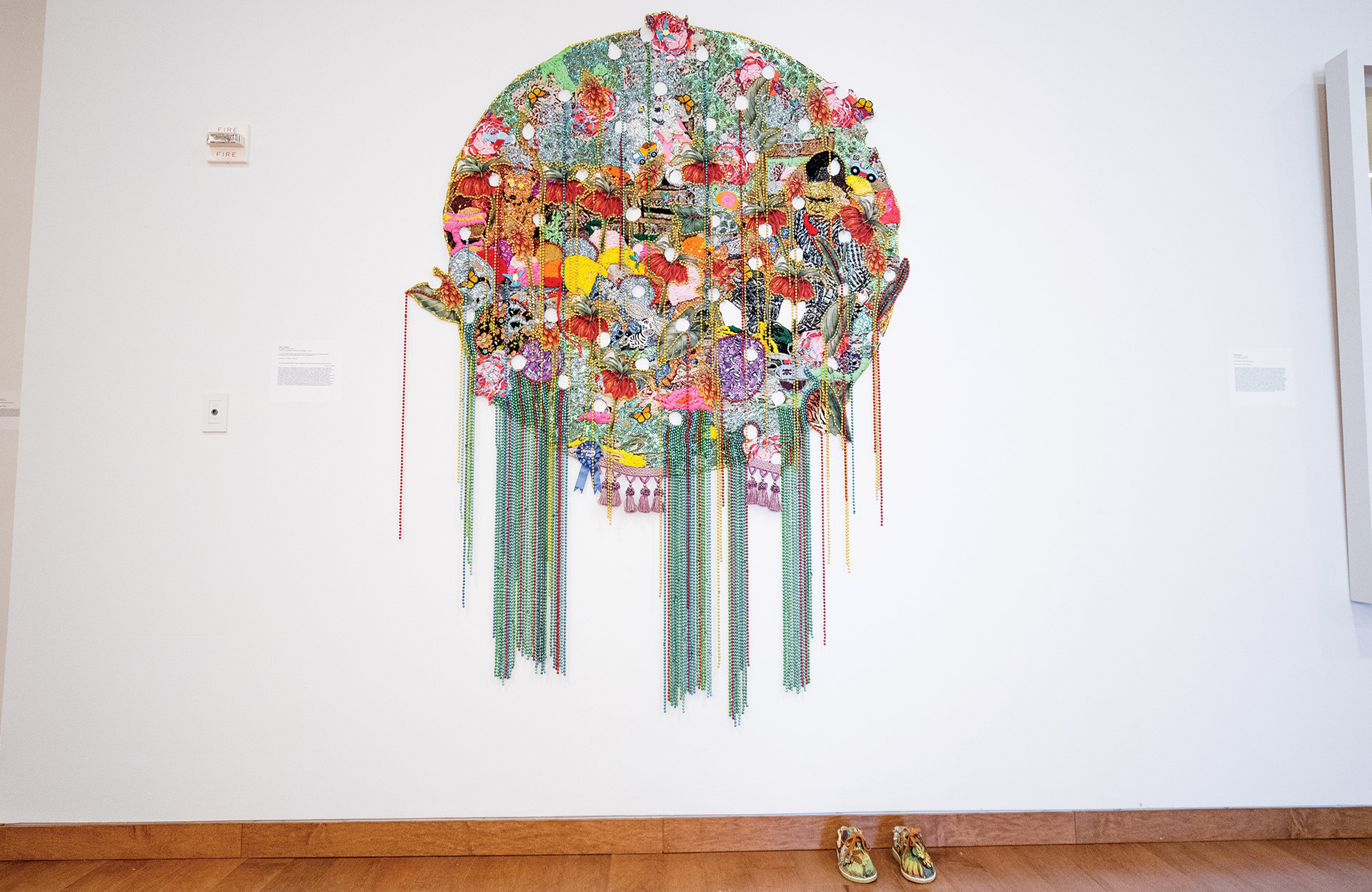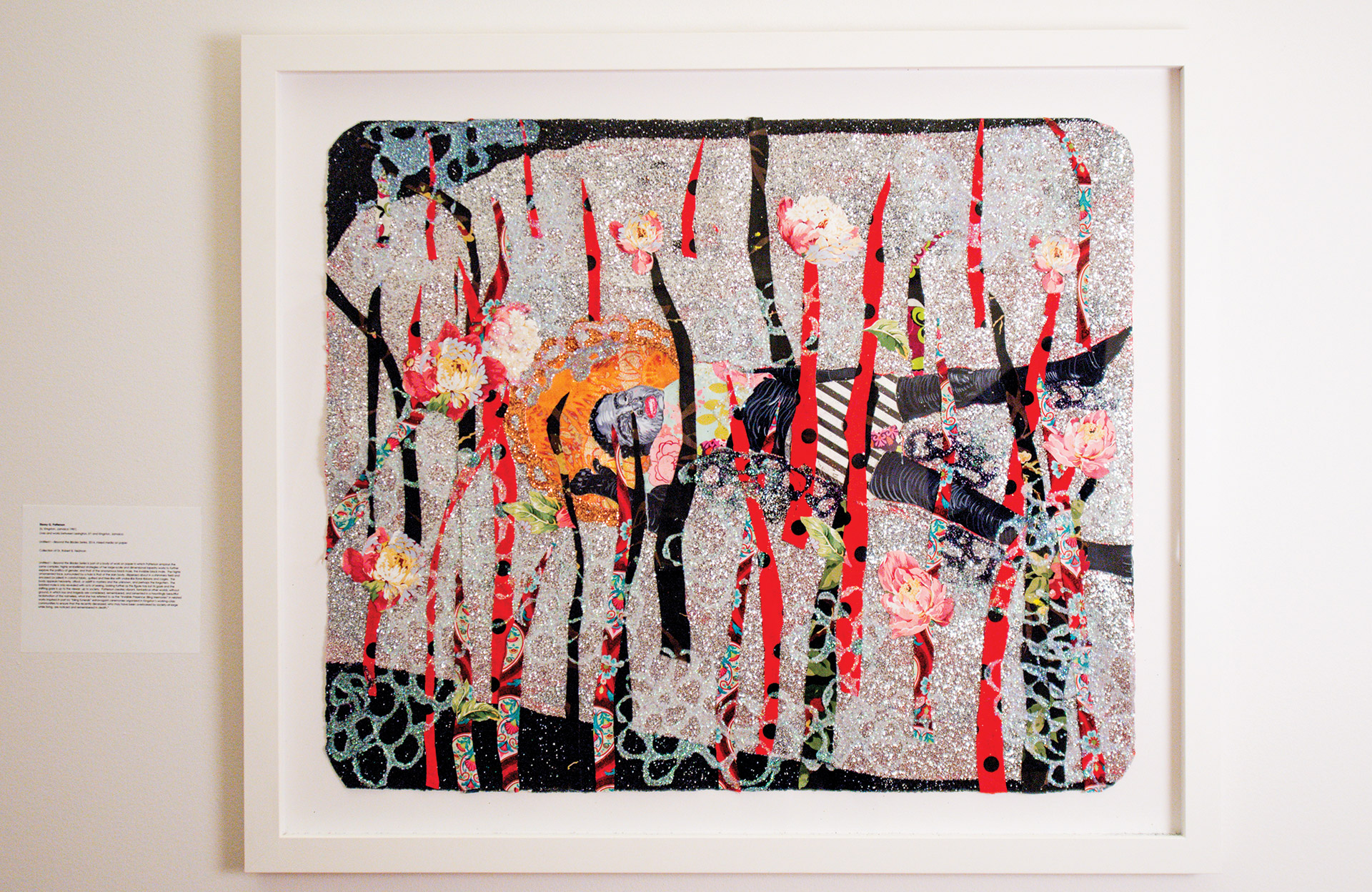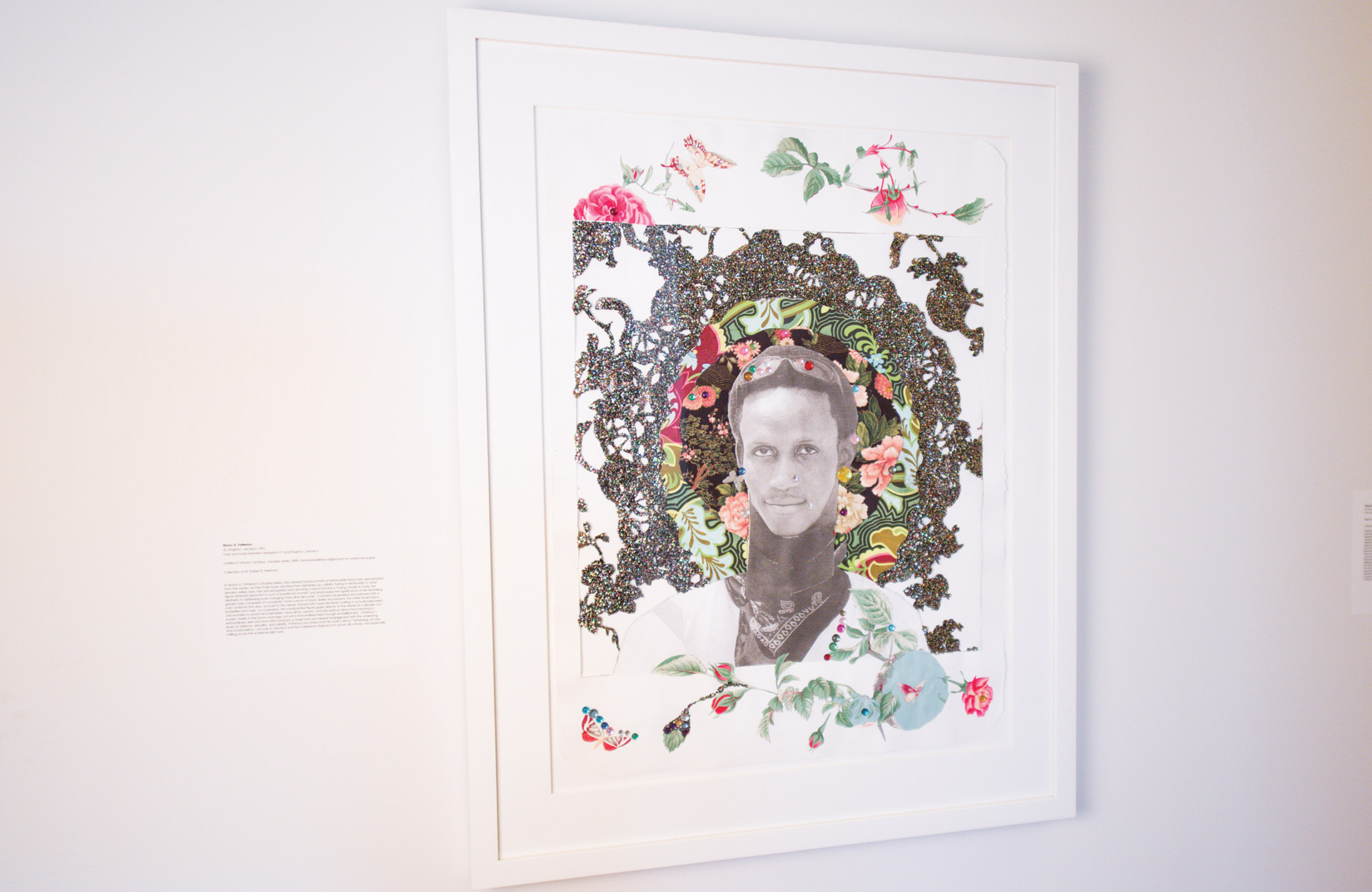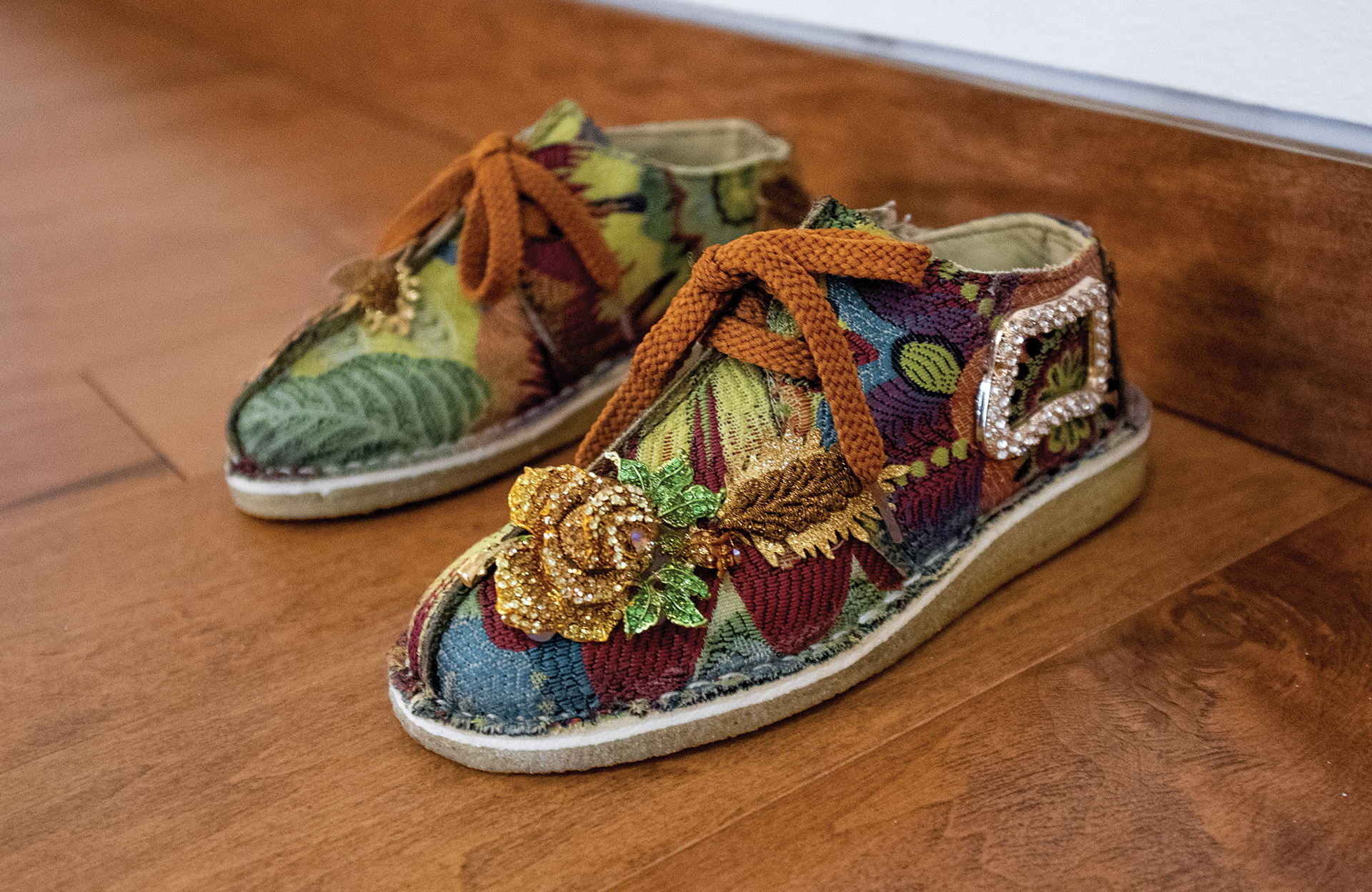 Ebony G. Patterson
Ebony G. Patterson Ebony G. Patterson
(b. Kingston, Jamaica 1981)
Lives and works between Lexington, KY and Kingston, Jamaica
… He, 2016, mixed media on hand-cut jacquard woven photo tapestry with beads, appliques, embellishments, broaches, plastic, glitter, fabric, and embellished
Collection of Dr. Robert B. Feldman
The looking requires thought, it requires engagement, it requires awareness, and it requires presence. —Ebony G. Patterson
Ebony G. Patterson’s work explores constructions of the masculine within popular culture while using Jamaican dancehall culture, Kingston, Jamaica’s inner-city environment, violence, bling funerals, and the cultural transformation occurring not only in the Caribbean but in America as well, as a platform for discourse about masculinity in heightened feminized space. With a celebratory palette, playful and colorful found objects, Patterson imbues hand-made, labor intensive jacquard tapestry, typically considered women’s work, into vibrant three-dimensional milieu for storytelling. She magically conflates the past with the present to address the future and all-encompassing loss that seems inevitable to her protagonists, here a black child. This circular tapestry is bullet laded with holes creating empty space amid a most chaotically stunning space dripping with carnival beads, patched with flowers, crocheted happiness, and surrounded by childhood toys: a teddy bear, toy car, butterfly, and tiger. The anonymous boy, stares forward, sullen and piercing in his gaze, and haunting in his innocence, an overwhelming sadness in his dislocated space, intensely emphasized by the empty shoes, left at the floor. In a memorial montage, we are left haunted by the mélange of materials, and the painful immateriality of the loss.
 Ebony G. Patterson
Ebony G. Patterson Ebony G. Patterson
(b. Kingston, Jamaica 1981)
Lives and works between Lexington, KY and Kingston, Jamaica
Untitled I – Beyond the Bladez Series, 2014, mixed media on paper
Collection of Dr. Robert B. Feldman
Untitled I – Beyond the Bladez Series is part of a body of work on paper in which Patterson employs the same complex, highly embellished strategies of her large-scale and dimensional tapestry works to further explore the politics of gender, and that of the anonymous black male, the invisible black male. The highly ornamented face, surrounded by a halo is that of the slain body, dispersed about in a shimmery field and encased (or jailed) in colorful fabric, quilted and tree-like with snake-like floral ribbons and cages. The body appears heavenly, afloat, or adrift in mystery and the unknown, and perhaps the forgotten. The isolated male is only revealed with acts of seeing, looking further as this figure has lost its gaze and the shifting gaze is up to the viewer, up to society. Patterson creates vibrant, fantastical other worlds, without ground, in which loss and tragedy are considered, remembered, and lamented in a hauntingly beautiful reclamation of the nameless, what she has referred to as the “Invisible Presence: Bling Memories” in related works inspired in part by “bling funerals” extravagant ceremonies organized in Kingston’s working-class communities to ensure that the recently deceased, who may have been overlooked by society-at-large while living, are noticed and remembered in death.”
 Ebony G. Patterson
Ebony G. Patterson Ebony G. Patterson
(b. Kingston, Jamaica 1981)
Lives and works between Lexington, KY and Kingston, Jamaica
Untitled IV (Khani + di Krew) –Dsciplez Series, 2009, hand-embellished digital print on watercolor paper
Collection of Dr. Robert B. Feldman
In Ebony G. Patterson’s Dsciples Series, she created hybrid portraits of fashionable black men appropriated from the media, but her male faces are bleached, lightened up, visibility fading in relationship to what remains visible; ears, hair and elongated neck donning a black bandana. Posing, model or muse, the figure attempts seduction in such a transitional moment and emphasizes the significance of her feminizing aesthetic in addressing ever-changing masculine discourse. Crowned, be-jeweled and adorned with a garden halo comprised of concentric circle cutouts of black doilies and sequins, the white-faced black man confronts the view, as muse to the viewer, framed with hyper-feminine crafting to include bejeweled butterflies and roses. As a paradox, the manipulated figure gazes directly at the viewer as a disciple, but one wonders to whom he is beholden. Masculinity, beauty, and perceptions about that meaning in society, fades in the photo montage, but yet is immortalized here through embellishment. Patterson’s extraordinary deft and innovation prompts a closer look and deeper engagement with the underlying issues of violence, sexuality, and visibility. Patterson has stated that her work is about “witnessing, access, and social politics,” not only in Jamaica and the Caribbean Diaspora but across all cultures, and especially chilling across the Americas right now.
